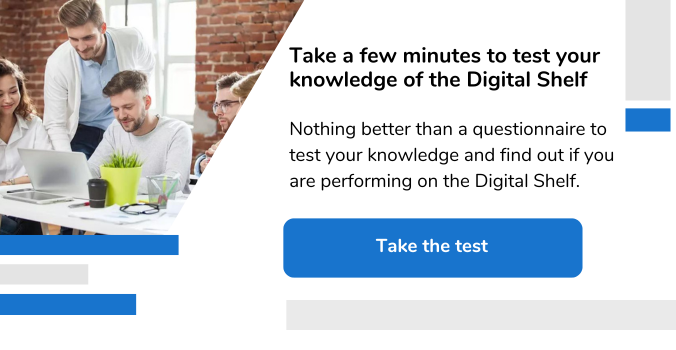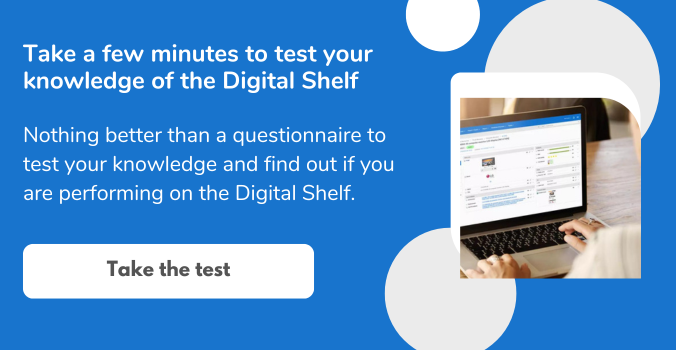Customer expectations have changed with 84% of shoppers1 now putting as much importance on the experience provided by a company as in its products and services.
To provide shoppers with an optimal experience, businesses must implement PXM (Product Experience Management) and CXM (Customer Experience Management). These two methods aim to create positive emotions among shoppers throughout their customer journey.
Find out about PXM and CXM and how to combine them to increase customer satisfaction and boost your sales.
#PXM and CXM: definition and challenges
#CXM: meeting customer demands
CXM is a « customer centric »2 method touching on all the interactions between the customer and a business. It involves considering all their needs to strengthen their attachment to the brand: satisfaction, loyalty, engagement… These needs can be factual3 (price, product quality, speed of service…) or emotional3 (customization, consideration, attentiveness…).

To properly implement CXM, you need to involve all the departments of your company in the development of a « customer centric » culture: Marketing, Customer services, Support, R&D… According to Gartner, this joint effort4 is what makes a CXM strategy successful and meets customer demands: 73% of shoppers5 are prepared to switch to a competitor brand if the quality of service is not up to scratch at each point of interaction.
It is also essential to pay particular attention to the « customer voice6 » in each department. For example, carrying out a customer satisfaction survey and/or asking for feedback after a purchase to gauge the real level of customer satisfaction and improve their experience. 77% of shoppers7 appreciate being asked for their opinion.
So CXM is vital and companies that are attentive to it improve their results, generating revenues 4 to 8%7 higher than businesses that do not, and being 60%7 more profitable on average.
#PXM: create an attachment to the product
PXM (Product Experience Management) is the most comprehensive answer to the new demands of shoppers and encompasses all their interactions with the product. This method involves providing customers with a targeted product experience so as to create a strong connection with the product and make them want to buy it.
For successful PXM the quality of all types of product information is essential: marketing descriptions, photos, technical features, prices… It is important to focus on this data to ensure that it is reliable and of high quality with over 50% of shoppers8 being prepared to leave a brand if they encounter flawed product information.

It is also important to provide shoppers with the right information at the right time. For example, when a shopper visits an eCommerce site, the information they find must be adapted to their geolocation (country, culture, local standards…), translated into the right language and customized to their profile (purchasing history, specific expectations, email exchanges…). Making this effort is vital as 74% of shoppers7 are frustrated if the content they find is not customized to them and 33% of them9 are likely to abandon a purchase if the price is not indicated in their chosen currency.
In the eCommerce industry in particular, PXM has become essential and enables businesses to greatly increase their sales with 80% of shoppers7 more likely to buy from businesses providing a customized product experience.
#CXM and PXM: provide an optimal experience
#The line between CXM and PXM
The line between CXM and PXM is blurred. They are two different methods involving making constant efforts to provide shoppers with an optimal experience throughout their shopping journey. They have the common goals of increasing customer satisfaction, boosting sales, improving customer engagement and loyalty…
However, CXM and PXM have different actions. CXM is a more global notion around the customer's experience in each of their contacts with the business and therefore involves all departments or services.
More specific and « product orientated », PXM focuses more precisely on the relation between the customer and the product and touches on all the departments involved in the creation of an optimal product experience: SEO, eCommerce, Marketing, Product…
#Combine CXM and PXM to remain competitive
PXM and CXM are actually two complementary notions. PXM is an extension of CXM and therefore contributes to improving the customer experience. To use these two methods together properly a business must be equipped with technology adapted to the task.
Artificial Intelligence10 (AI) can help improve your CXM and contribute to improving the quality of exchanges with your customers. For example, chatbots11 together with AI, can help customer services department to handle a large volume of customer queries, leaving them with time to deal with more complex demands.
To get the most from PXM, PIM solutions (Product Information Management) enable teams to increase their efficiency in terms of data consistency: customization, adaptation to countries and targets, translation, proofreading and checking… Businesses using these solutions see improved results and can reduce the product returns on their eCommerce site by 40%12 while quadrupling their conversion rate by 412.
1
Donegan, C. D. (2019, June 12). State of the Connected Customer Report Outlines Changing Standards for Customer Engagement. salesforce.com.
2
Bathelot, B. B. (2020, February 1). Customer centricity. definitions-marketing.com.
3
Forest, C. F. (2021, November 22). L'expérience clients : un alignement des 3C au sein des organisations. hbrfrance.fr.
4
Ray, A. R. (2021, April 9). Gartner Expands Its Definition of Customer Experience Management (CXM). blogs.gartner.com.
5
Salesforce. Understanding the Digital Customer Experience. salesforce.com.
6
Ray, A. R. (2021, April 9). Gartner Expands Its Definition of Customer Experience Management (CXM). blogs.gartner.com.
7
Morgan, B. M. (2019, September 24). 50 Stats That Prove The Value Of Customer Experience. forbes.com.
8
Frenchweb. (2017, January 19). E-commerce : 10 chiffres qui montrent l'importance d'une bonne stratégie de contenu. frenchweb.fr.
9
Henault, J. H. (2020, March 5). 50 faits et statistiques déterminants pour votre stratégie SEO internationale. semrush.com.
10
Oliel, X. O. (2019, January 9). Comment l'IA révolutionne l'Expérience client en dix points. siecledigital.fr.
11
Salesforce. (2020, September 16). Qu'apporte un chatbot à l'expérience client ? salesforce.com.
12
Denisov, P. D. (2021, December 7). Recrutement, PXM, Cybersécurité : les challenges du big data en 2022. journaldunet.com.







